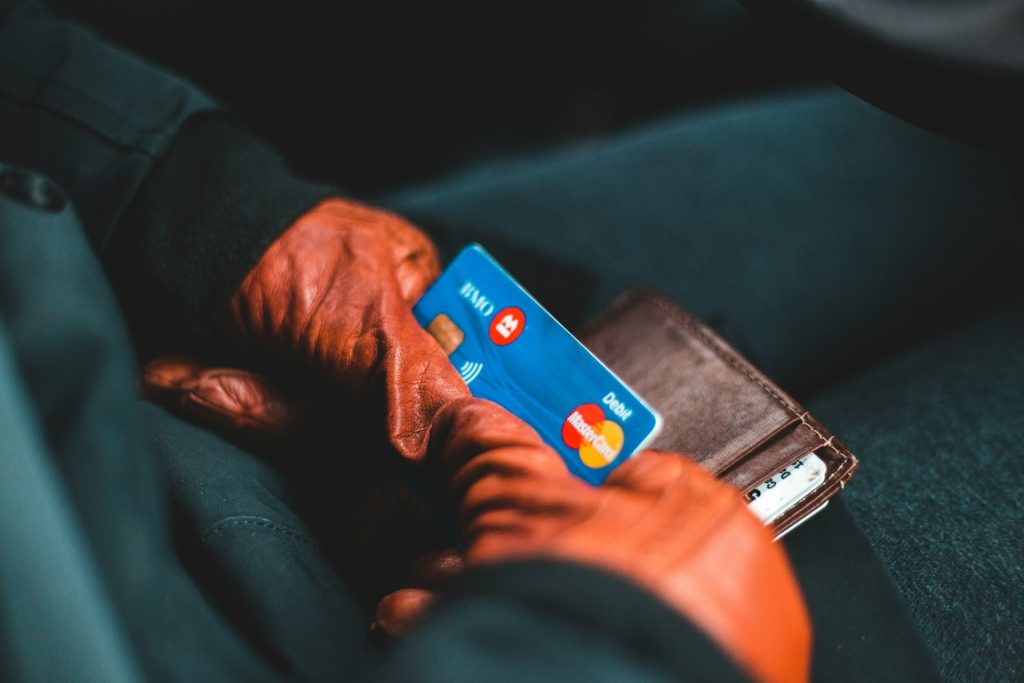Credit Card Scams: Everything You Need to Know
Every year, millions of people fall victim to credit card scams, often without even realizing until it’s way too late and they face significant financial loss. And scammers are just getting more skilled.
Cybercriminals use creative tactics to deceive even the most cautious among us. Whether you shop online, use an ATM or respond to a phone call, the risk of falling prey to a scam is closer than you think. Here’s what to know about the latest tricks and how to protect yourself from becoming a target.
What is Credit Card Scamming?
Credit card scamming is a common form of financial fraud. Specifically, it’s when cybercriminals or con artists trick individuals or organizations into revealing their credit card details. They may create fake websites resembling legitimate stores, send deceptive emails that look authentic or use telephone tricks (social engineering) to pose as trusted entities like banks or officials.
Once they get your details, scammers can make unauthorized purchases, withdraw money or sell your information to other malicious actors. This damage can be quick and severe, impacting your credit score and financial future.

Latest Credit Card Scams to Watch Out For
Cybercriminals are constantly deploying new tactics to trap victims. Moreover, they’re quick to adapt to any trends and developments in both technology and society. Here are some of the most current and common scams.
Phishing Emails
These emails are cleverly designed to look like they come from your bank, online retailers or trusted companies. They often urge immediate action, such as verifying your account or claiming your account has been compromised. Essentially, they prey on one of the most powerful human emotions: fear.
Emails like this include links to fake websites that look real but are actually traps to steal credentials and credit card information.
Pro Tips: Always analyze the sender’s email address for inconsistencies. Plus, avoid clicking on links or downloading attachments from suspicious emails, and always verify the legitimacy of the message by contacting the institution directly using official contact channels.
Fake Shopping or E-Commerce Sites
Scammers set up websites that appear as legitimate online stores. However, once you input your payment details, the site captures your information for malicious use. These sites often advertise discounts that seem too good to be true and lack proper security certificates.
Pro Tips: Use reputable, well-known online retailers. Besides, check the URL for spelling errors or irregularities, look for HTTPS and padlock symbols and read customer reviews before purchasing.
Phone Scams (Social Engineering)
Another tactic criminals commonly use is impersonating bank officials, tech support or government agents over the phone. Similar to phishing emails, they create a sense of urgency. For example, they may claim there’s suspicious activity on your account, and ask for your credit card number or login details to “resolve” the issue.
Pro Tips: Remember that reputable institutions will never ask for sensitive details over the phone, especially via unsolicited calls. In this situation, the best you can do is hang up and then independently contact your bank through their official phone number.
Malware and Card Skimming Devices
Malware infects your devices through malicious links, downloads or compromised apps, capturing keystrokes or screen activity. On the other hand, physical skimming devices are attached to ATM or gas pump card readers, secretly stealing card details and PINs.
Pro Tips: Use ATMs located in secure, well-lit areas, and inspect card readers for tampering. As for malware, keep your devices protected with antivirus software, regular updates and security patches.

How to Avoid Credit Card Scams
Prevention starts with cautious habits and using security tools. Here are some specific things you can do.
- Guard your information: Never share your credit card details via email, social media or over the phone unless you are 100% certain of the recipient’s identity and legitimacy. Be especially wary of unsolicited contact claiming urgent action is needed.
- Shop securely: Only buy from websites that use “https” – remember to check for the padlock icon. Avoid entering your details on unsecured pages.
- Avoid clicking suspicious links: Instead of clicking links in unsolicited emails or messages, manually type the URL into your browser. You should also make sure to run them through verified scam and safety checkers.
- Monitor your accounts regularly: Check your bank and credit card statements often. If you spot unauthorized or unfamiliar transactions early, you can react before further damage is done.
- Activate alerts: Set up transaction alerts or notifications for purchases to get real-time updates on account activity.
- Use strong, unique passwords: Create complex passwords that combine letters, numbers and symbols. Additionally, consider using a password manager to keep track of them securely.
- Enable two-factor authentication: Adding this extra layer (such as a one-time code sent to your phone) helps prevent unauthorized access even if your password is compromised.
- Update your software: Keep your operating system, browsers and security applications up-to-date to patch security vulnerabilities.
- Limit personal data sharing: Be cautious about what details you share on social media. Scammers can use publicly available info to craft targeted attacks.
- Secure your internet connection: Avoid accessing financial accounts over public Wi-Fi networks. Also, when necessary, connect via a VPN to encrypt your data.
What to Do If You Suspect a Scam
Taking action quickly can reduce damage. Here are some things you should do if you fall victim to a credit card scam.
- Contact your bank immediately if you notice suspicious transactions.
- Request your bank to block your current card and issue a new one to prevent further fraudulent charges.
- Update passwords for your online banking, shopping accounts and email accounts, especially those related to financial services.
- Check your credit reports for any unfamiliar accounts or activities. In many countries, you can request free annual credit reports to ensure no accounts have been opened under your name.
- File a report with your local consumer protection agency, such as the FTC in the U.S., or equivalent authorities in your country. Reporting helps authorities track scams and may assist in investigations.
- Keep an eye on your bank and credit card statements for weeks or months afterward. Promptly report any suspicious activity.
- Stay informed about current scams and tactics by following reputable sources or cybersecurity news sites.
The Role of Technology in Protecting You
To defend yourself against credit card scams, make sure to take advantage of everything modern technology has to offer. You don’t have to be particularly tech savvy; it’s enough if you know a few common but powerful tools.
- Multi-factor and biometric authentication: These add layers of security beyond just passwords, making unauthorized access significantly harder.
- Real-time transaction monitoring: Many banks and services now alert you immediately to suspicious activity, which allows quick intervention.
- Security applications and monitoring tools: Software like ours can detect malware, unauthorized access, or suspicious device activity at an early stage. Combining these with safe browsing habits provides a comprehensive protective shield.
- Virtual credit card numbers: Some banks or credit card issuers offer temporary or virtual card numbers for online shopping, which can be used for a limited time or amount. That way, even if you are compromised, the exposure is limited.
Additional Tips for Enhanced Security
- Regularly backup your data: In case of malware or cyberattack, having secure backups of important information can help you recover quickly.
- Enable device encryption: Protect your smartphones, tablets, and computers with encryption to prevent theft of sensitive data.
- Stay cautious about physical security: Cover your PIN at cash machines, and inspect card readers for tampering before inserting your card.
- Educate your family and colleagues: Ensure those around you understand online scams and security best practices, especially if managing shared accounts or devices.

Final Words of Caution
Cybercriminals are constantly evolving their tactics. However, if you combine vigilance, technology and good habits, you’ll significantly reduce your risk:
- Recognize the signs of scams, such as urgent language, unexpected requests or suspicious website URLs.
- Never rush into sharing sensitive information.
- Always verify the legitimacy of communications and platforms.
- Use available security features and tools proactively.
Are You a Parent or Employer?
As a parent or employer, you’re responsible for more than just your own online safety. Do you want to have peace of mind knowing you can protect your family, team or business from online scams, fraud and other digital dangers?
Consider investing in a phone or PC monitoring app like ours. Phone Monitor gives you real-time insight into website visits, app activity, device usage, emails and more, so you can spot suspicious behavior early on.
If your kids or employees visit fake sites, download risky apps or engage in unsafe online actions, you’ll know. With this proactive oversight, you can intervene early, prevent potential scams from causing harm, and ensure your family and business are staying safe online.
Conclusion
To sum up, credit card scams are everywhere – and they’re getting smarter all the time. The best way to stay safe is to stay alert, keep an eye on your accounts and use simple security tips like checking websites, making strong passwords. And of course, act quickly if something seems off. Remember, the sooner you spot a problem, the less damage it can do.

